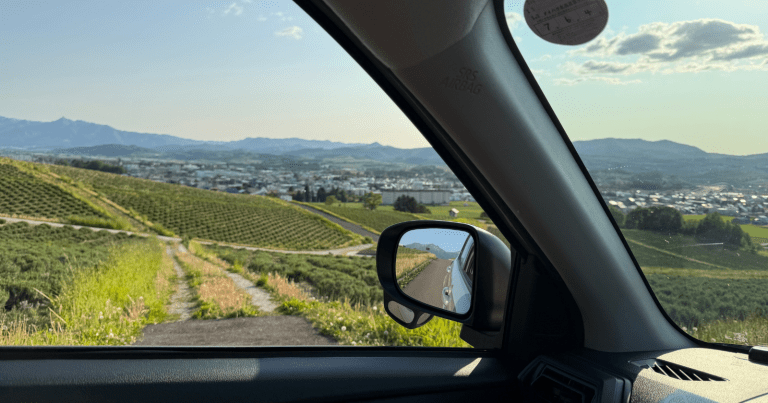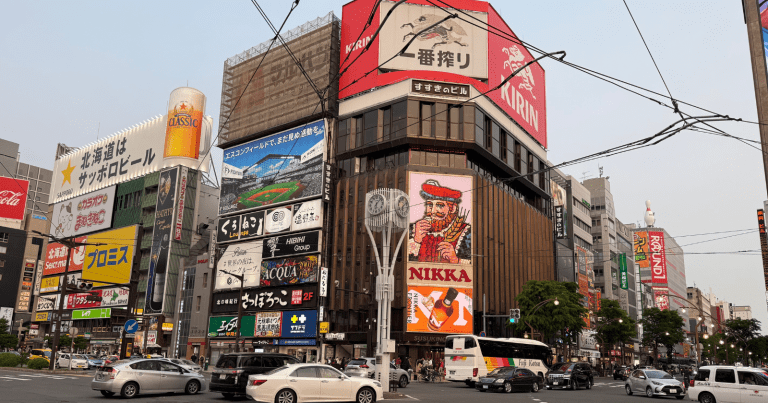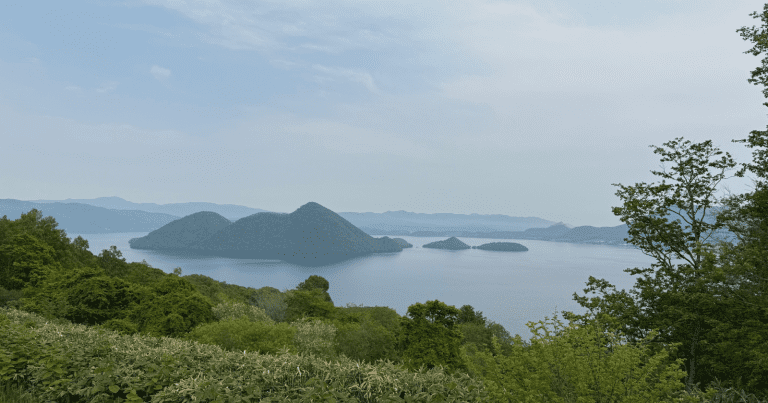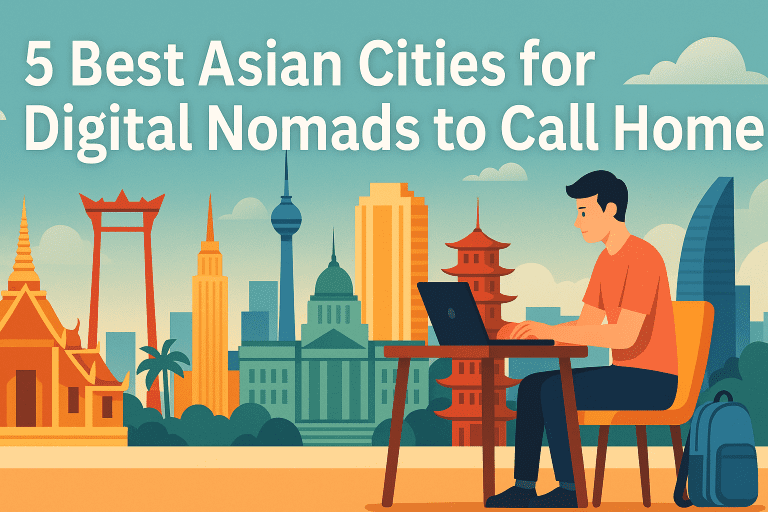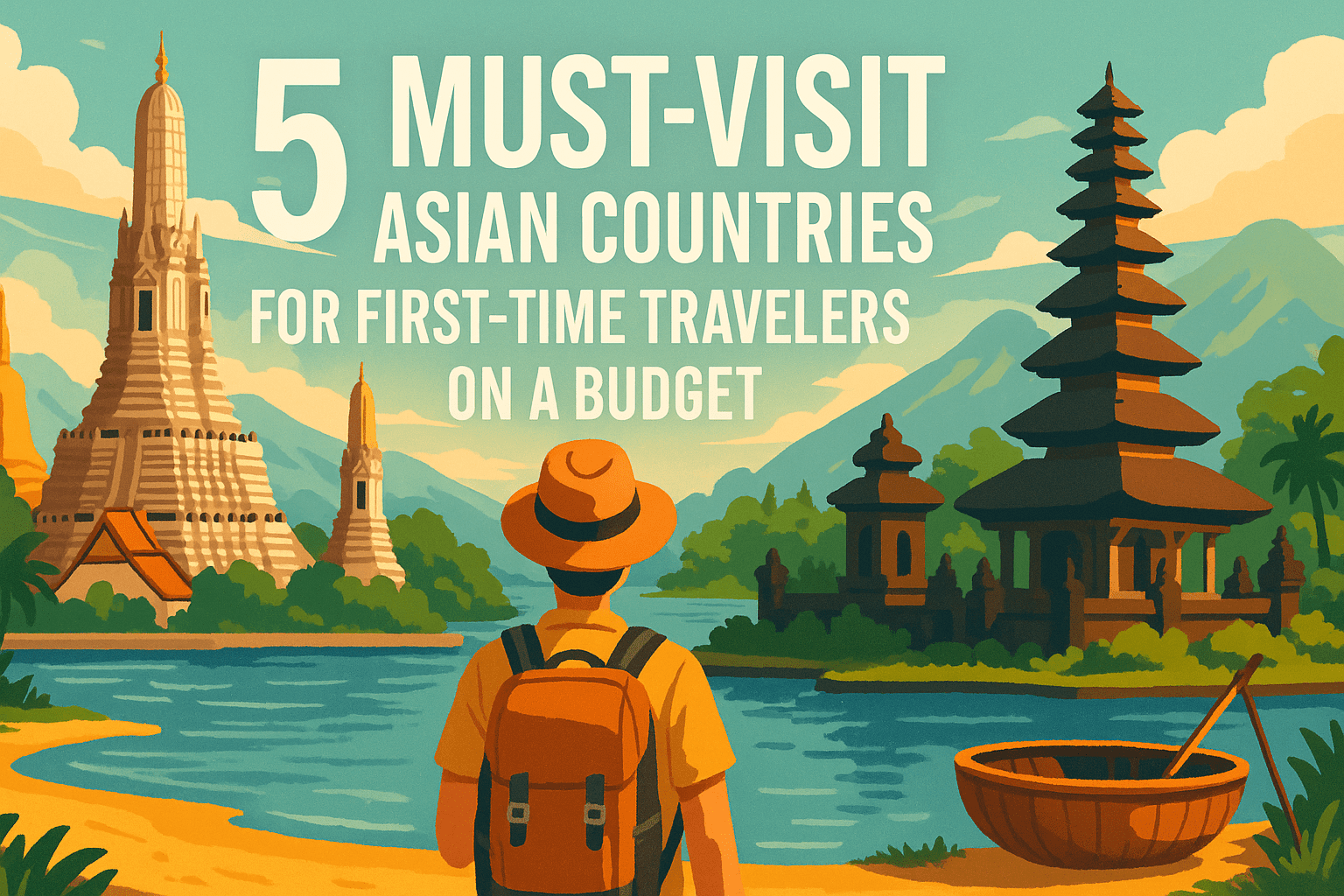
Alright, fellow adventurers! You’ve heard the call of Asia – the tantalizing smells of street food, the dazzling temples, the bustling markets, and the unbelievably beautiful landscapes. But maybe you’re thinking it’s too expensive, too complicated, or just too… much for a first-timer, especially if you’re watching your wallet. Well, hold up! As someone who’s navigated these lands for years on a shoestring, let me tell you, exploring Asia on a budget isn’t just possible, it’s practically a rite of passage. This article is your personal guide to unlocking incredible experiences without breaking the bank, focusing specifically on the best budget friendly Asian countries for first time travelers.
Forget those generic travel guides that tell you to “save money.” I’m here to give you the actionable, boots-on-the-ground strategies for five incredible countries that are welcoming, relatively easy to navigate, and incredibly affordable. These aren’t just places to visit; they’re places where your money stretches further, allowing you to truly immerse yourself without constant financial stress. By the end of this, you’ll have a clear picture of where to go, how long to stay, what it’ll cost, and how to get between them smoothly, especially if you’re in your early 20s and keen to meet people and have unforgettable experiences without needing a trust fund.
Your First Asia Budget Adventure: Mapping the Route
Planning a first trip to Asia can feel overwhelming. Where do you start? How do you connect the dots? For budget travelers, particularly those new to the continent, a logical route through Southeast Asia often makes the most sense due to affordable flights and overland transport connections. Here are five countries that are fantastic starting points, often linked by well-trodden budget travel paths.
1) Thailand: The Classic Gateway
Why it’s Great for First-Timers on a Budget: Thailand is the quintessential Southeast Asian starter country. It’s got everything: vibrant cities, stunning beaches, ancient ruins, incredible food, and a well-established tourist infrastructure that makes independent travel surprisingly easy. Importantly, it’s incredibly affordable once you’re there. Transport options are plentiful and cheap, from local buses and trains to budget airlines. Accommodation ranges from dirt-cheap hostels to budget guesthouses, and the street food scene is legendary for both its flavor and low cost. This makes it a prime example of a country where affordable food is everywhere.
Budget Per Day: Aim for $25 – $40 USD per day. This covers hostel dorms, eating mostly local food/street food, using public transport, and entry fees for some attractions. You can definitely do it cheaper if you’re super frugal, but this range allows for comfort and a few paid activities.
Recommended Days: 10-14 days is a good starting point. This lets you experience Bangkok’s buzz, perhaps visit Chiang Mai for culture and mountains, and squeeze in some island time without feeling rushed. Any less and you’ll barely scratch the surface.
Good for Early 20s Travelers: Absolutely! Thailand has a massive backpacker scene, especially in places like Bangkok’s Khao San Road, Chiang Mai, and the southern islands. Hostels are social hubs, and it’s easy to find travel buddies for day trips or nights out. The energy is high, the activities (trekking, diving, parties) are varied, and the infrastructure caters perfectly to this demographic.
Practical Route Link to Next Country: Thailand shares land borders with Laos, Cambodia, and Malaysia, all accessible via relatively cheap buses or trains. Many budget travelers head south towards Malaysia or Cambodia next.
2) Malaysia: Diverse & Accessible
Why it’s Great for First-Timers on a Budget: Malaysia offers a fantastic blend of cultures (Malay, Chinese, Indian) and stunning landscapes, from modern cities like Kuala Lumpur to lush rainforests and beautiful islands. It’s slightly more developed than some of its neighbors, which means infrastructure is generally excellent, making travel smooth and safe. While perceived as slightly pricier than Thailand or Vietnam, strategic choices keep it budget-friendly. The public transport in cities like KL is top-notch and cheap, accommodation options are varied (hostels, budget hotels), and food courts and hawker centers offer incredible, affordable meals. You can also find fantastic cities that are great bases for longer stays due to connectivity and cost.
Budget Per Day: $30 – $50 USD per day. KL can be slightly more expensive for accommodation than rural areas, but transport and food remain cheap. This budget allows for comfortable hostel stays or budget hotels, eating at hawker centers, and experiencing city attractions and maybe a side trip or two.
Recommended Days: 7-10 days. Enough time to explore Kuala Lumpur, maybe visit the historical city of Malacca or Penang for its food and culture, and perhaps a quick hop to an island like Langkawi or the Perhentians (season permitting).
Good for Early 20s Travelers: Very suitable. KL has a vibrant youth scene and plenty of hostels. Penang is popular for its street art and food culture, which appeals to younger travelers. It’s also a country where English is widely spoken, easing navigation.
Practical Route Link to Next Country: Southern Malaysia borders Singapore (train/bus), and mainland Malaysia connects easily by bus or budget flight to Vietnam or Indonesia. Many travelers take a bus south towards Singapore before flying elsewhere, or head towards Vietnam.
3) Vietnam: Culture, Food & Value
Why it’s Great for First-Timers on a Budget: Vietnam is famous for being incredibly budget-friendly, often cited as one of the cheapest countries to travel extensively. It offers a rich history, stunning natural beauty (from the northern mountains to the Mekong Delta), chaotic but charming cities, and arguably the best street food scene in Asia. The ‘Open Bus’ system makes traveling the length of the country relatively easy and extremely cheap. Accommodation is very affordable, and you can eat like royalty on just a few dollars a day.
Budget Per Day: $20 – $35 USD per day. This is where your money really stretches. You can easily find hostel beds for under $10, eat pho or banh mi on the street for $1-3 a meal, and use local transport for cents. Activities like visiting historical sites or taking a boat trip are also very reasonably priced.
Recommended Days: 14-21 days. Vietnam is a long country! To travel from North (Hanoi) to South (Ho Chi Minh City) or vice-versa and see key highlights like Halong Bay, Hue, Hoi An, and maybe the Mekong Delta, you need ample time to avoid constant rushing.
Good for Early 20s Travelers: Excellent. The backpacker trail is well-defined, making it easy to meet others. Hostels are social, and there’s a huge range of activities catering to adventurous and social travelers, from motorbike tours to pub crawls. The energy of the cities is infectious.
Practical Route Link to Next Country: Vietnam borders Cambodia (bus) and Laos (bus/slow boat). Many travelers head from Ho Chi Minh City to Phnom Penh or Siem Reap in Cambodia.
4) Cambodia: History & Resilience
Why it’s Great for First-Timers on a Budget: Cambodia offers a profound cultural and historical experience, primarily centered around the awe-inspiring temples of Angkor Wat. While Angkor Wat itself is a significant cost (the multi-day pass is worth it!), the country is otherwise incredibly affordable. Accommodation, food, and local transport (like tuk-tuks) are very cheap. The Cambodian people are remarkably resilient and welcoming. It’s a smaller country than its neighbors, making it easier to traverse key highlights quickly.
Budget Per Day: $25 – $45 USD per day (excluding the Angkor pass, which is a one-time fee, currently $37 for 1 day, $62 for 3 days, $72 for 7 days). This covers cheap guesthouses or hostels, eating local food, getting around Siem Reap or Phnom Penh, and entrance fees to other sites.
Recommended Days: 5-7 days. This gives you enough time for 3-4 days in Siem Reap to explore Angkor Wat and the surrounding area properly, plus a day or two in Phnom Penh to visit the historical sites there.
Good for Early 20s Travelers: Good. Siem Reap has a lively Pub Street area and many social hostels catering to backpackers visiting Angkor. Phnom Penh is a bit more subdued but offers important historical context. It’s a key stop on the Southeast Asia circuit, so you’ll meet fellow travelers easily.
Practical Route Link to Next Country: Cambodia borders Thailand and Vietnam (bus). The most common routes are bus from Siem Reap to Bangkok or bus from Phnom Penh to Ho Chi Minh City. It also has international airports for budget flights further afield.
5) Indonesia (specifically Bali & surrounding islands): Island Paradise on a Budget
Why it’s Great for First-Timers on a Budget: Indonesia is vast, but focusing on popular islands like Bali and Lombok makes it manageable and budget-friendly for first-timers. Bali has a huge tourist infrastructure, offering everything from high-end resorts to incredibly cheap guesthouses and homestays. The food, from local warungs (small eateries) to international fare, can be very affordable if you eat like a local. Getting around can be done via scooter rental (cheap but requires caution and skill), ride-sharing apps, or local transport. While some activities can be tourist-priced, everyday costs are low.
Budget Per Day: $25 – $45 USD per day. This allows for comfortable homestay or budget hotel accommodation, eating local food, scooter rental costs, and entry fees to temples or natural sites. Island hopping adds to the cost but is manageable with budget ferries.
Recommended Days: 7-14 days. This lets you split your time between different areas of Bali (e.g., Ubud for culture, Canggu/Seminyak for beaches/social scene) and maybe hop over to the Gili Islands or Lombok for a different vibe.
Good for Early 20s Travelers: Excellent. Bali is a global hotspot for younger travelers, surfers, and digital nomads. Canggu and Uluwatu have huge surf and social scenes. Ubud attracts those interested in yoga and culture. Hostels and co-living spaces are abundant, making it very easy to connect with others. Just be mindful that the social scene can sometimes revolve around partying.
Practical Route Link to Next Country: Bali has a major international airport with frequent budget flights to Australia, Southeast Asian hubs like Kuala Lumpur and Singapore, and domestic flights connecting to other parts of Indonesia if you decide to extend your trip.
“Travel is the only thing you buy that makes you richer.”
– Anonymous
Strategy Set 1: Mastering the Budget Basics
Okay, you know where to go. Now, let’s talk about how to do it without constantly checking your bank balance. These are the foundational principles I live by on the road in Asia.
Accommodation Hacks: Your biggest potential daily expense after activities is usually where you sleep. Skip the fancy hotels. Hostels are your best friend, especially if you’re solo or in your early 20s. Not only are dorms cheap (often $5-$15/night in these countries), but they’re social hubs. Many offer free breakfast, saving you another few dollars. Look for hostels with good common areas or organized activities. If you want more privacy, guesthouses or budget hotels are still very affordable, often found on booking sites for $15-$30/night. Use platforms like Hostelworld, Booking.com, and Agoda (popular in Asia) and filter by price and guest ratings. Don’t be afraid to book just a night or two in advance, giving you flexibility.
Eat Local, Live Large: This is non-negotiable for budget travel in Asia and, honestly, one of the best parts of the experience. Street food and local markets are where you’ll find the most authentic, delicious, and cheapest meals. A full meal often costs just $1-4. Don’t be scared – look for stalls with high turnover (a good sign of freshness) and where locals are eating. Learn a few basic phrases for ordering. Restaurant meals targeted at tourists can cost 5-10 times more. Embrace the plastic stools and outdoor settings!
Smart Transport Choices: For getting between countries in Southeast Asia, look at budget airlines like AirAsia, Lion Air, or VietJet Air. Book in advance if possible, but also check last-minute deals. They are often cheaper than long bus journeys for significant distances. Within countries, buses and trains are incredibly cheap, though slower. For shorter distances or city travel, embrace local options: songthaews (shared taxis in Thailand), tuk-tuks (agree on the price BEFORE you get in!), motorbike taxis (use reputable apps like Grab in many countries), or ride-sharing apps like Grab or Gojek which are prevalent and often cheaper than traditional taxis. Always use meters or agree on a price upfront and don’t be afraid to walk away if it feels too high. Negotiating is part of the process in many places.
The Power of Free Activities: These countries are rich in culture and natural beauty, much of which costs nothing to enjoy. Wander through local markets, explore temples (check if there’s a small donation or free entry for certain areas), hike in national parks (some have entry fees, but many trails outside core areas are free), relax on public beaches, or simply soak in the atmosphere of a bustling city street. Many cities offer free walking tours (though tipping is expected). Your eyes and feet are your primary entertainment tools.
Anecdote Time: I remember my first time navigating Bangkok. I took a metered taxi from the airport without much thought. Cost me maybe $15. A few days later, heading back towards that area, I learned about the Airport Rail Link followed by the BTS Skytrain. Total cost? Under $2. It was faster, avoided traffic, and dramatically cheaper. Lesson learned: Always research the cheapest, most efficient transport options before you need them. Those few dollars saved add up quickly over a trip.
“The world is a book, and those who do not travel read only one page.”
Strategy Set 2: Diving Deeper into Savvy Travel
Once you’ve got the basics down, layer on these techniques to optimize your budget and experience even further.
Mastering Local SIMs/eSIMs: Staying connected is crucial for navigation, communication, and using essential travel apps. Don’t rely on expensive roaming or patchy free Wi-Fi. As soon as you arrive at an airport (or ideally, research and purchase an eSIM online before you go), get a local SIM card. They are incredibly cheap in these countries (often under $10 for a decent data package). This lets you use maps (Google Maps, Maps.me offline), translation apps, ride-sharing apps, and stay in touch. It’s a small upfront cost with huge benefits for convenience and safety. Efficient use of technology is one of the key Asia airport survival hacks.
Bargaining Etiquette (and When to Use It): Bargaining is common in markets and with independent transport like tuk-tuks. It’s not about being aggressive, but about respectful negotiation. Start with a counter-offer lower than their initial price (maybe 50-70%), and meet somewhere in the middle. Know roughly what things should cost by asking locals or checking online forums. Importantly, don’t bargain for food or in regular shops with fixed prices. Bargain for souvenirs, clothing in markets, and transport without meters. And if the difference is only a few cents, is it really worth the hassle? Probably not. Remember, that small amount means more to the vendor than it does to you.
Leveraging Travel Apps: Beyond maps and translation, there are apps specifically for budget travelers in Asia. Currency conversion apps are essential. XE Currency is reliable. Budget tracking apps like Trail Wallet or Wallet can help you monitor spending against your daily goal. Ride-sharing apps like Grab (widespread) or Gojek (Indonesia, Vietnam) are indispensable for getting fair prices on taxis and sometimes even food delivery. Using apps effectively can seriously improve your travel experience.
Responsible Tourism on a Budget: Saving money doesn’t mean cutting corners on ethics. Be mindful of animal tourism – avoid elephant rides or shows; look for ethical sanctuaries. Minimize plastic use by carrying a reusable water bottle (filtered water stations are becoming more common, or use a SteriPen/Lifestraw). Support local businesses by eating at warungs and buying souvenirs from independent vendors. Learn a few words of the local language – a simple “hello,” “thank you,” and “delicious” goes a long way and enhances interactions.
Strategy Set 3: Insider Tips & Resources
Finally, some more specific tips and where to find ongoing, real-time advice.
Packing Light is Packing Smart: Especially on a budget, you’ll likely be moving around a lot. Hauling huge suitcases on crowded buses or negotiating uneven pavements is a nightmare. Learn to pack light – aim for carry-on only if possible. This saves time at airports, makes using public transport easier, and often avoids checked baggage fees on budget airlines. Quick-dry clothing, versatile layers, and packing cubes are your friends. A small daypack is also essential for daily excursions.
Consider Multi-City Flights: Sometimes, flying into one city (like Bangkok) and out of another (like Ho Chi Minh City) via a multi-city ticket can be cheaper or more convenient than booking two separate one-way international flights. Play around with flight search engines like Google Flights, Skyscanner, and Momondo, using their “explore” or multi-city options.
Tap into the Backpacker Community: The wealth of up-to-date information available from fellow travelers is immense. Join Facebook groups for backpackers in specific countries or Southeast Asia general groups. Check forums like the Thorn Tree on Lonely Planet (though less active than it once was) or the subreddits for individual countries (r/Thailand, r/Vietnam, etc.). Travelers share real-time info on transport strikes, visa issues, recommended hostels, and budget hacks that might not be in guidebooks yet. Search these resources for “Visa requirements [your nationality] [country]” or “Bus from X to Y” to get current advice. Reliable sources for information on visa requirements should always be official government or embassy websites.
Travel Insurance Isn’t Optional: I know, I know, it’s an extra cost when you’re on a budget. But please, don’t skip it. Accidents happen, whether it’s a minor scooter mishap, a bad case of food poisoning, or something more serious. Medical costs in Asia can be high, and travel insurance can cover these, plus lost luggage or trip interruptions. Shop around for policies specifically designed for backpackers or budget travelers; they are often more affordable. Checking reputable sources like the CDC for health advisories before you go is also wise.
Budget Buffer: Even with meticulous planning, unexpected costs arise. A visa fee you forgot, a spontaneous trip addition, or needing to take a taxi because the bus broke down. Always have a small buffer – perhaps 10-15% of your total budget – set aside for contingencies. This prevents minor setbacks from derailing your entire trip or forcing you into debt.
Conclusion: Your Affordable Asian Adventure Awaits
Traveling through Asia on a budget as a first-timer is not just doable; it’s an incredibly rewarding experience. Countries like Thailand, Malaysia, Vietnam, Cambodia, and Indonesia offer stunning sights, rich cultures, and welcoming people without demanding a huge financial outlay. By focusing on affordable accommodation, eating local food, using smart transport options, and leveraging free activities, you can easily stick to a budget of $25-$45 a day in many of these places, leaving you more cash for experiences rather than just survival.
Remember the key takeaways: eat street food, use local transport, embrace hostels, and get a local SIM. These simple choices will save you a fortune and likely deepen your connection with the places you visit. Don’t let budget fears hold you back. Asia is waiting, ready to welcome you with open arms (and affordable meals!). With a little planning and these practical tips, you’re not just traveling Asia; you’re traveling Asia smarter.


